Planet View: S24°21.770’ E139°28.206’
Street View: S24°21.770’ E139°28.206’
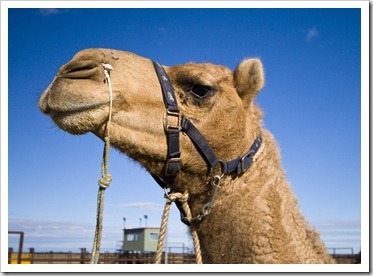 It’s a long way from Cairns to Adelaide. 2738 kilometers (1701 miles) miles if you take the shortest route. We made our way through Australia’s centre via the small cattle station outpost of Bedourie in southwest Queensland. It’s 1729 kilometers (1074miles) from Cairns airport – where we hopped off the plane from Lizard Island – to the remote western Queensland settlement of Bedourie. If you’re wondering why we went so far out of our way to pass through an isolated bush town in the middle of Queensland’s cattle country it’s to catch an event we learned of way back in May when we were in Coolum: the annual Bedourie camel races.
It’s a long way from Cairns to Adelaide. 2738 kilometers (1701 miles) miles if you take the shortest route. We made our way through Australia’s centre via the small cattle station outpost of Bedourie in southwest Queensland. It’s 1729 kilometers (1074miles) from Cairns airport – where we hopped off the plane from Lizard Island – to the remote western Queensland settlement of Bedourie. If you’re wondering why we went so far out of our way to pass through an isolated bush town in the middle of Queensland’s cattle country it’s to catch an event we learned of way back in May when we were in Coolum: the annual Bedourie camel races.
We spread the journey from Cairns to Bedourie over four days, first spending a night in our favourite tablelands town of Yungaburra on the shores of Lake Tinaroo. From Yungaburra we headed west across the Kennedy Highway, through the dilapidated settlement of Georgetown and further west toward Normanton. There wasn’t a whole lot to see on the way across the base of Cape York, seemingly endless plains of red dirt and scattered gums on either side of the blacktop. A good portion of the road between the tablelands and Normanton has only enough bitumen to handle the width of a single vehicle, so putting two wheels on the passenger side of The Tank onto the dirt shoulder at 100KPH (62MPH) to avoid oncoming cars definitely kept us on our toes.
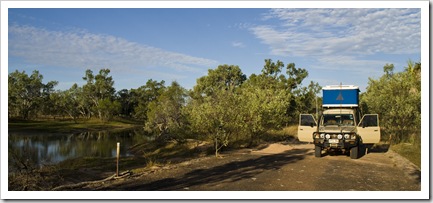
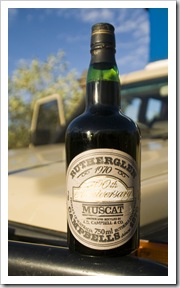
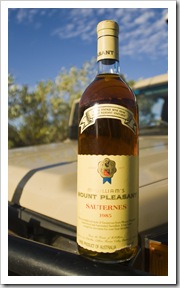 We spent our first night in the bush near Twenty Mile Creek about 30 kilometers (18.6 miles) east of Normanton, where we found a track off the highway leading into the bush as a service road for the Gulflander railway line. It was a tranquil spot next to a lagoon where we watched the vast array of birdlife go about their business in the afternoon sun. There were a couple of Brolgas poking their beaks along the waterhole’s banks when we arrived, awesome to see the towering birds up close as they hunted for food. The bush around us came to life as the sun waned, wallabies thumping their tails in the surrounding scrub and Green Tree Frogs coming out of hiding in the Pandanus Palms next to The Tank.
We spent our first night in the bush near Twenty Mile Creek about 30 kilometers (18.6 miles) east of Normanton, where we found a track off the highway leading into the bush as a service road for the Gulflander railway line. It was a tranquil spot next to a lagoon where we watched the vast array of birdlife go about their business in the afternoon sun. There were a couple of Brolgas poking their beaks along the waterhole’s banks when we arrived, awesome to see the towering birds up close as they hunted for food. The bush around us came to life as the sun waned, wallabies thumping their tails in the surrounding scrub and Green Tree Frogs coming out of hiding in the Pandanus Palms next to The Tank.

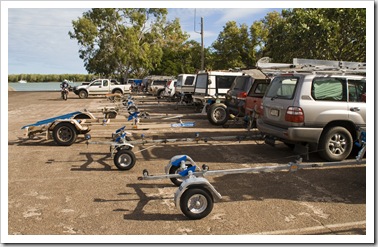 Lisa had a yearning to see the Gulf of Carpentaria on our way back to Adelaide, in her opinion a circumnavigation of Australia just wouldn’t be complete without visiting the bight between Cape York Peninsula and the northern portion of the Northern Territory. So from Normanton we drove the 70 kilometers (43.5 miles) into the sleepy fishing village of Karumba, a spot popular with grey nomads on their way across the Savannah Way. We drove to Karumba Point to take a look at the murky waters of the gulf, amazed at the number of caravan-pulling vehicles in the middle-of-nowhere spot, all visiting for a shot at prized Barramundi in the surrounding estuaries. Amazing the number of Brolga and Jabiru hunting in the many waterholes around Karumba, when we saw these stork-like birds in the Northern Territory last year we thought they were so rare but the area around Karumba was absolutely inundated with them.
Lisa had a yearning to see the Gulf of Carpentaria on our way back to Adelaide, in her opinion a circumnavigation of Australia just wouldn’t be complete without visiting the bight between Cape York Peninsula and the northern portion of the Northern Territory. So from Normanton we drove the 70 kilometers (43.5 miles) into the sleepy fishing village of Karumba, a spot popular with grey nomads on their way across the Savannah Way. We drove to Karumba Point to take a look at the murky waters of the gulf, amazed at the number of caravan-pulling vehicles in the middle-of-nowhere spot, all visiting for a shot at prized Barramundi in the surrounding estuaries. Amazing the number of Brolga and Jabiru hunting in the many waterholes around Karumba, when we saw these stork-like birds in the Northern Territory last year we thought they were so rare but the area around Karumba was absolutely inundated with them.
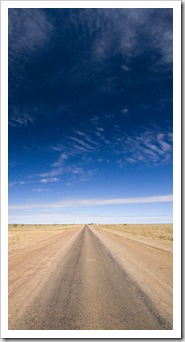
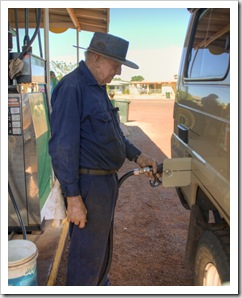
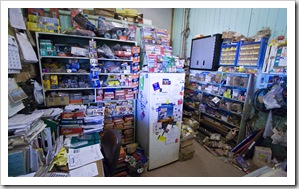 Back through Normanton we stopped off at the giant crocodile monument and at the town’s only petrol station to top up The Tank. The old fella pictured here filling up our tanks reminded me a lot of my grandfather: everything at his place of business appeared to be an absolute jumble to the uneducated onlooker but I’m sure he knew exactly where everything was. His stockroom was an absolute mess of spare parts, old magazines, cash registers and other knickknacks. I don’t think I’d want to have any vehicle problems in Normanton!
Back through Normanton we stopped off at the giant crocodile monument and at the town’s only petrol station to top up The Tank. The old fella pictured here filling up our tanks reminded me a lot of my grandfather: everything at his place of business appeared to be an absolute jumble to the uneducated onlooker but I’m sure he knew exactly where everything was. His stockroom was an absolute mess of spare parts, old magazines, cash registers and other knickknacks. I don’t think I’d want to have any vehicle problems in Normanton!
We turned south in Normanton, past the Burke and Wills Roadhouse and south toward Cloncurry. We stopped off for a night just north of Cloncurry, setting up on one of the expansive cattle stations in the area. We were both amazed at the temperature differential with the 400 kilometers (248.5 miles) we traveled south from Normanton: at Twenty Mile Creek we were in shorts and thongs until we went to bed, whilst near Cloncurry we were in jeans and jumpers (sweaters) by 4:00PM!
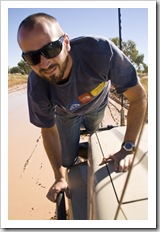
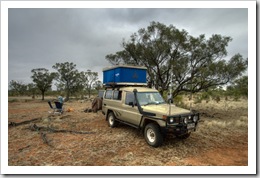
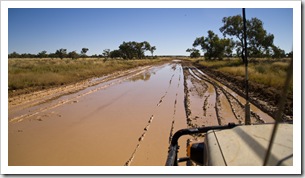 It was a long slog from Cloncurry to Bedourie. The first couple of hundred kilometers were a mix of boggy mud and bitumen, the former thanks to the unseasonal rain that this area of the country received a few days prior. Amazing just how desolate this area of the country is, in some areas we could look all around as we flew down the bitumen and see nothing but red dirt
It was a long slog from Cloncurry to Bedourie. The first couple of hundred kilometers were a mix of boggy mud and bitumen, the former thanks to the unseasonal rain that this area of the country received a few days prior. Amazing just how desolate this area of the country is, in some areas we could look all around as we flew down the bitumen and see nothing but red dirt 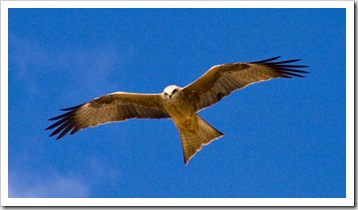 and blue sky. Not a single tree in sight between us and the horizon. The road between Boulia and Bedourie had only been open for a few days when we passed through, the rains had turned the unsealed sections of the road into deep, waterlogged bogs, impassable even in a high-clearance 4WD. When we traveled through we did actually get momentarily stuck in one or two spots, I had to hop out of the driver’s seat and crawl around the front of The Tank on the bull bar to lock the front hubs. That or wade in knee deep mud: no thanks. The rain brought the birds, the swamps amidst the desert were filled with Ibis and Brolgas, patrolling the shallows with their long beaks for food beneath. We also drove through some unbelievable swarms of palm-sized locusts, at certain points almost having to slow down because the density of the insects impaired our vision. There had to have been millions of the huge insects, bouncing off the windscreen like tiny pebbles as we mowed through the swarms. Hundreds of huge Whistling Kites flocked for a feeding frenzy on the locusts, the graceful birds of prey filling the skies alongside the road.
and blue sky. Not a single tree in sight between us and the horizon. The road between Boulia and Bedourie had only been open for a few days when we passed through, the rains had turned the unsealed sections of the road into deep, waterlogged bogs, impassable even in a high-clearance 4WD. When we traveled through we did actually get momentarily stuck in one or two spots, I had to hop out of the driver’s seat and crawl around the front of The Tank on the bull bar to lock the front hubs. That or wade in knee deep mud: no thanks. The rain brought the birds, the swamps amidst the desert were filled with Ibis and Brolgas, patrolling the shallows with their long beaks for food beneath. We also drove through some unbelievable swarms of palm-sized locusts, at certain points almost having to slow down because the density of the insects impaired our vision. There had to have been millions of the huge insects, bouncing off the windscreen like tiny pebbles as we mowed through the swarms. Hundreds of huge Whistling Kites flocked for a feeding frenzy on the locusts, the graceful birds of prey filling the skies alongside the road.
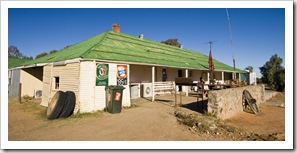
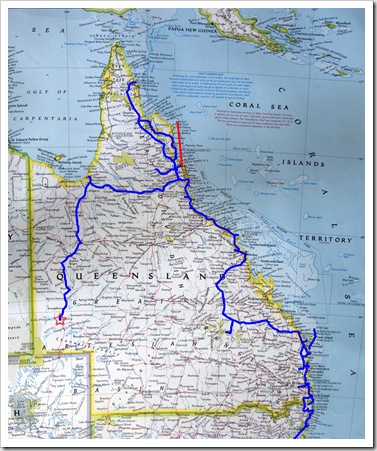 It’s hard to imagine why towns like Bedourie actually exist. The surrounding cattle stations are effectively self sufficient, and the number one employer in the sleepy settlement of Bedourie is the city council (followed by the shire of Diamantina!). There’s a whopping 100 residents of Bedourie, not exactly a thriving Channel Country town. The only pub in town was a hive of activity on the two nights we stayed, we had some memorable conversations with the locals, as we always seem to do in hole-in-the-wall towns. You know you’re in a small town when all the locals leave their wallets on the bar at the pub when they come in for a drink!
It’s hard to imagine why towns like Bedourie actually exist. The surrounding cattle stations are effectively self sufficient, and the number one employer in the sleepy settlement of Bedourie is the city council (followed by the shire of Diamantina!). There’s a whopping 100 residents of Bedourie, not exactly a thriving Channel Country town. The only pub in town was a hive of activity on the two nights we stayed, we had some memorable conversations with the locals, as we always seem to do in hole-in-the-wall towns. You know you’re in a small town when all the locals leave their wallets on the bar at the pub when they come in for a drink!
The Bedourie camel races were such a truly unique experience, we’re so glad we coordinated our trip back to Adelaide to see such a true blue Australian event. There aren’t too many places in the world where you can watch professional jockeys riding camels in the middle of some of the biggest cattle 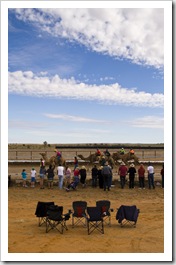
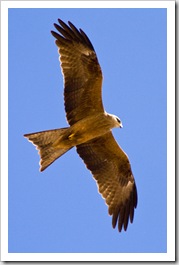 stations on the planet! The camel
stations on the planet! The camel 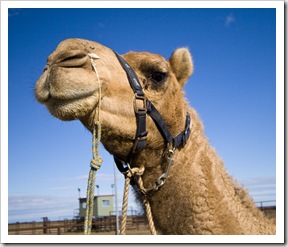 harnesses were quite a sight, without reins the camel had to be relied upon to steer itself while the jockey held on for dear life behind the hump. There were more than a couple of occasions when we saw jockeys bucked off, camels turn around mid-race and start running the wrong direction, and camels leave the race track altogether! Such a hoot… There was a bookie at the races to keep things interesting, Lisa got quite involved as the day progressed, keeping tally of which jockeys and camels performed the best and jotting down race times for the winners. Unfortunately we didn’t pick any winners (that goes for your bet too Connie!), a few second places but we need a bit more practice at picking camels, it seems…
harnesses were quite a sight, without reins the camel had to be relied upon to steer itself while the jockey held on for dear life behind the hump. There were more than a couple of occasions when we saw jockeys bucked off, camels turn around mid-race and start running the wrong direction, and camels leave the race track altogether! Such a hoot… There was a bookie at the races to keep things interesting, Lisa got quite involved as the day progressed, keeping tally of which jockeys and camels performed the best and jotting down race times for the winners. Unfortunately we didn’t pick any winners (that goes for your bet too Connie!), a few second places but we need a bit more practice at picking camels, it seems…
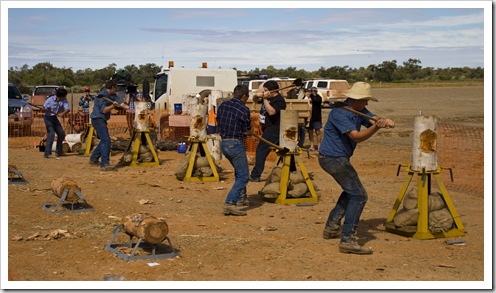 An Outback race event just wouldn’t be complete without a wood chopping event. The CEO of the Bedourie council is a professional wood chopper, so as part of the annual races he organized a wood chopping event into which anyone in the crowd could enter. The event pictured here was full of local cattle stockmen, the gum rounds they had to chop through absolutely brought them all to their knees. It looked like amazingly hard work, once they made their way to the centre of each
An Outback race event just wouldn’t be complete without a wood chopping event. The CEO of the Bedourie council is a professional wood chopper, so as part of the annual races he organized a wood chopping event into which anyone in the crowd could enter. The event pictured here was full of local cattle stockmen, the gum rounds they had to chop through absolutely brought them all to their knees. It looked like amazingly hard work, once they made their way to the centre of each 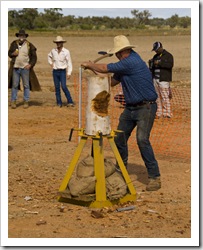
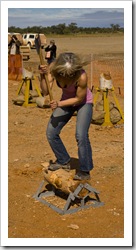 log the pace really slowed and by the end of it most of them could hardly lift their axes. One of the boys from Glengyle Station – located roughly 50 kilometers south of Bedourie – took the honors in the men’s event while the out-of-towner pictured to the right took the women’s crown. The MC mentioned that a professional wood chopper would make their way through similar logs in 30 to 40 seconds. That’d be something to watch!
log the pace really slowed and by the end of it most of them could hardly lift their axes. One of the boys from Glengyle Station – located roughly 50 kilometers south of Bedourie – took the honors in the men’s event while the out-of-towner pictured to the right took the women’s crown. The MC mentioned that a professional wood chopper would make their way through similar logs in 30 to 40 seconds. That’d be something to watch!
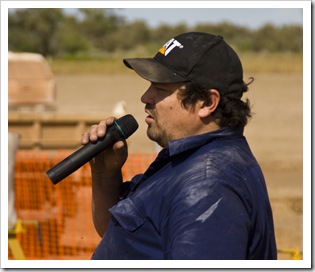
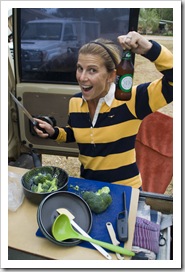
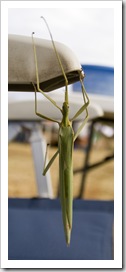 After a dip in Bedourie’s artesian hot springs just next to where we were camped, we finished up our day with another night at Bedourie’s Royal Hotel. We shared the pool table with a couple of Aboriginal stockmen working at one of the surrounding cattle stations, through the course of the night we discovered that they were both from Mount Barnett up in the Kimberley and were excited to hear that we’d visited their homeland when we visited Manning Gorge last August. One of the stockmen had placed second in the saddle bronc riding at the previous weekend’s rodeo, evident from the sizeable gash he had extending down one side of his face. A great stop off on our way south, very memorable to see those gangly camels careening down the muddy race course in the middle of the desert…
After a dip in Bedourie’s artesian hot springs just next to where we were camped, we finished up our day with another night at Bedourie’s Royal Hotel. We shared the pool table with a couple of Aboriginal stockmen working at one of the surrounding cattle stations, through the course of the night we discovered that they were both from Mount Barnett up in the Kimberley and were excited to hear that we’d visited their homeland when we visited Manning Gorge last August. One of the stockmen had placed second in the saddle bronc riding at the previous weekend’s rodeo, evident from the sizeable gash he had extending down one side of his face. A great stop off on our way south, very memorable to see those gangly camels careening down the muddy race course in the middle of the desert…
This entry was posted on Sunday, July 11th, 2010 at 6:00 AM and is filed under Australia, Queensland. You can follow any responses to this entry through the RSS 2.0 feed. Both comments and pings are currently closed.
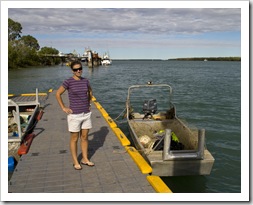
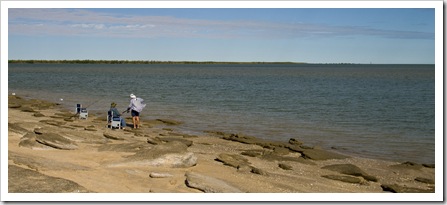
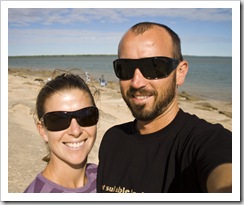
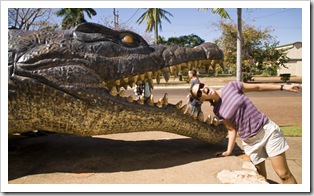
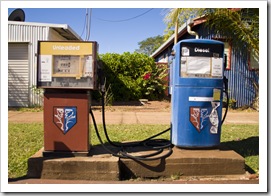
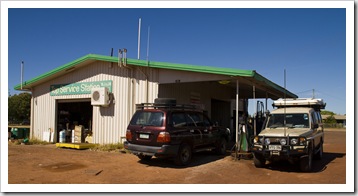
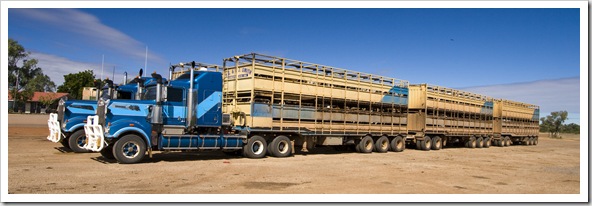
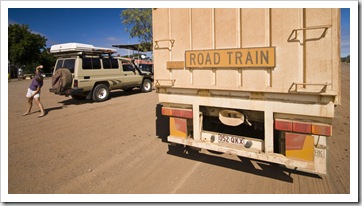
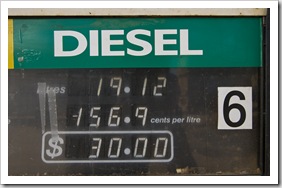
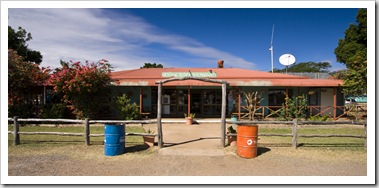
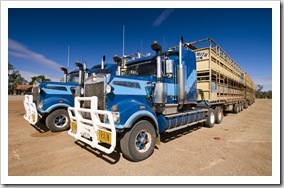
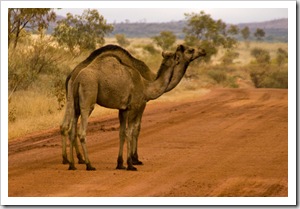
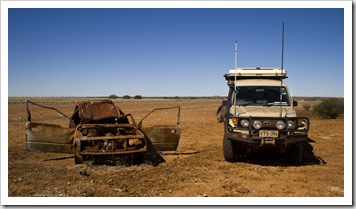
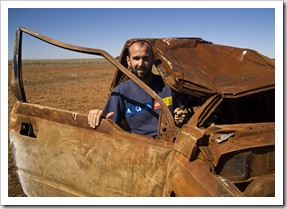
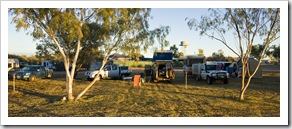
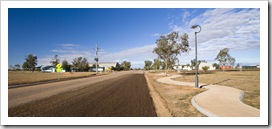
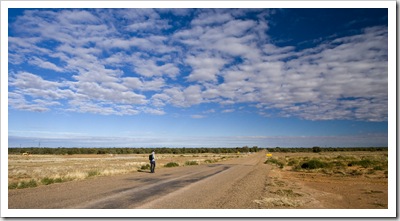
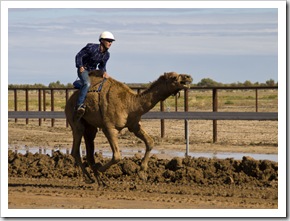
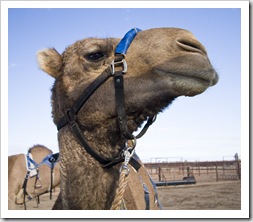
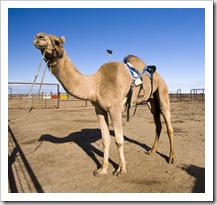
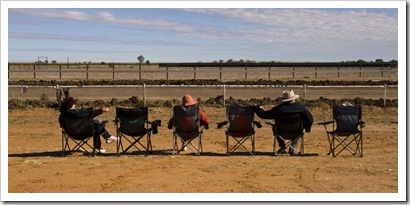
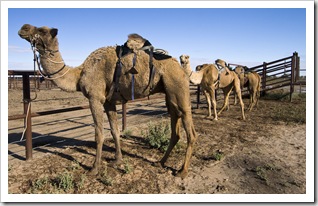
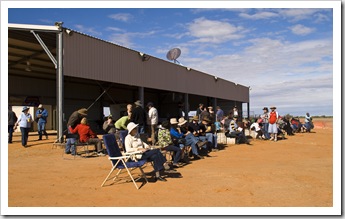
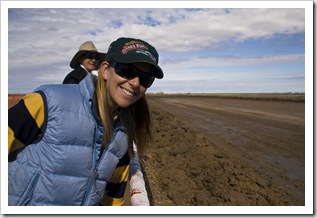
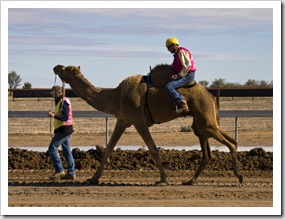

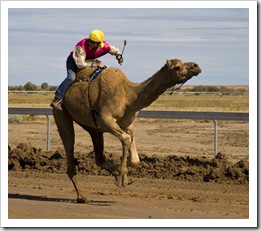
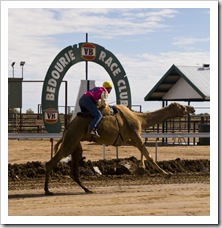
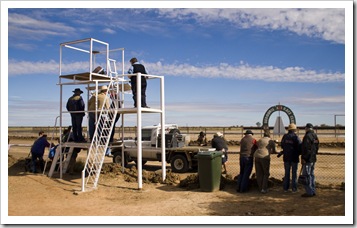
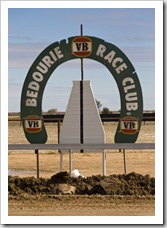
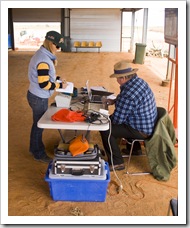
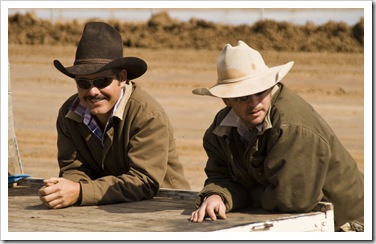
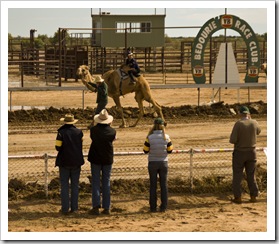
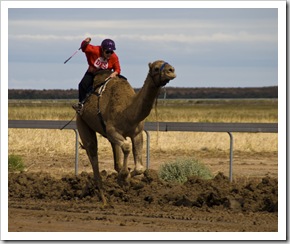
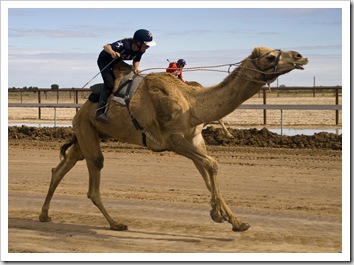
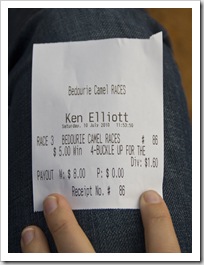
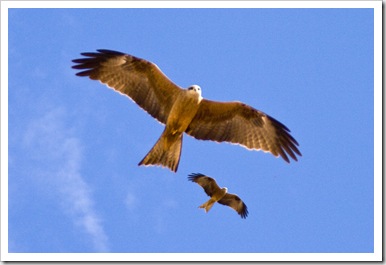
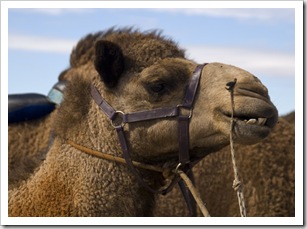
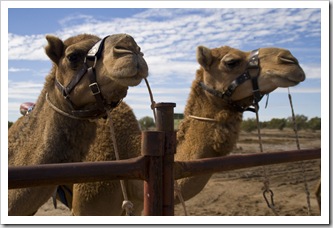
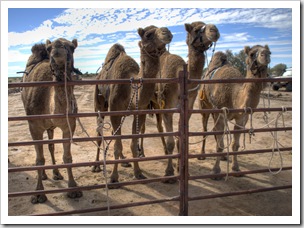
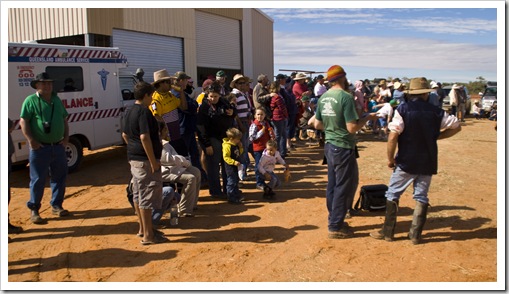
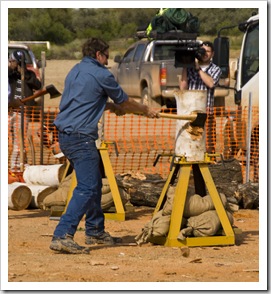
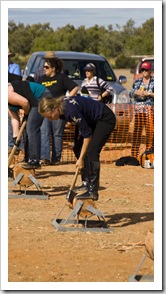

[…] left Bedourie early Sunday morning headed for the famous Outback settlement of Birdsville, just north of the […]
July 17th, 2010 at 9:29 AM
A wonderful story of the outback. Bedourie is such a great place with such stunning scenery and such friendly locals – I miss being there! Great images and story – well done!
August 16th, 2010 at 8:05 AM
My son from Scotland is on his way to Bedourie tow work for 8 weeks. How do you think he will cope?
August 20th, 2010 at 12:58 AM